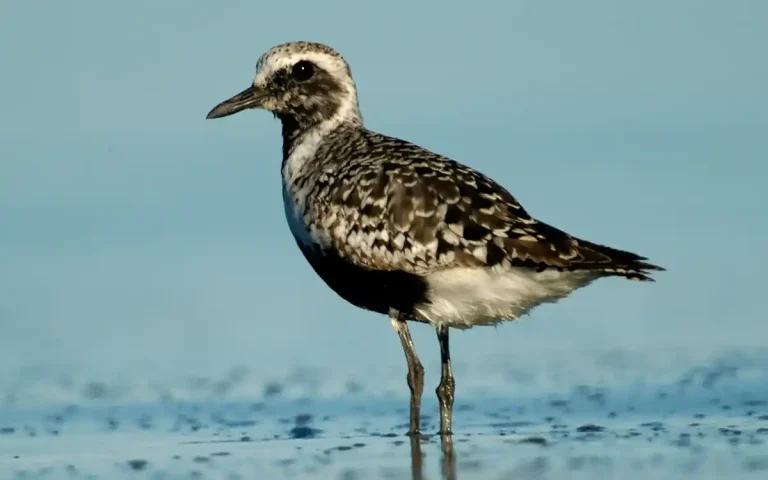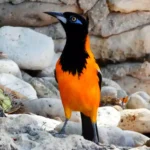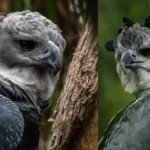Learn the 6 Species Hawks of South Carolina! Learn about these incredible birds, their unique behaviors, and the best places to observe them in their natural habitats.
6 Species Hawks of South Carolina
South Carolina boasts a diverse range of hawk species, each with its unique traits and behaviors. These include the Sharp-shinned Hawk, Cooper’s Hawk, Red-shouldered Hawk, Broad-winged Hawk, Red-tailed Hawk, and Northern Harrier. Let’s embark on a journey to discover their intricacies and charm.
Importance of Bird Watching and Bird Identification:
Bird watching isn’t merely a pastime; it’s an opportunity to gain insights into the avian realm. Observing hawks in their natural habitats provides a deeper understanding of their behaviors, interactions, and roles within the ecosystem.
Additionally, accurate bird identification is crucial for conservation efforts, enabling researchers to track population trends and implement necessary measures to protect these magnificent creatures.
1. Sharp-shinned Hawk:
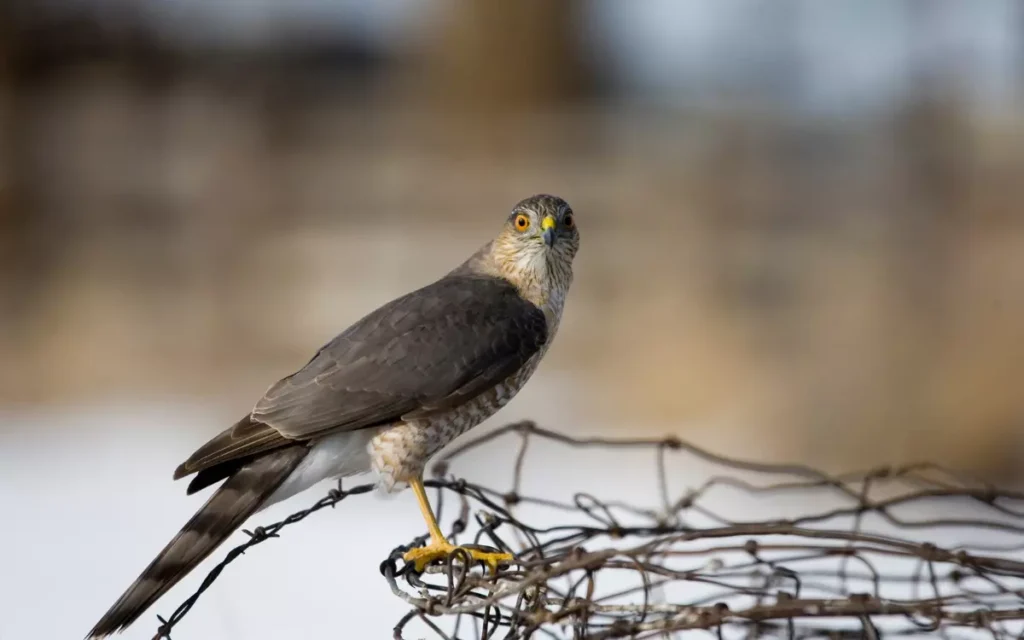
Migratory Nature and Appearance During Winter
The Sharp-shinned Hawk, with its swift flight and distinctive silhouette, graces South Carolina’s skies during winter. Its arrival signals the changing seasons and offers bird watchers a chance to witness its breathtaking migratory journey.
Rarity and Identification
Accounting for only 1% of bird sightings, spotting a Sharp-shinned Hawk is a rare treat. Distinguishing it from other hawks can be challenging due to its similar appearance to the Cooper’s Hawk. However, keen observers can note its smaller size and rounded tail.
Physical Characteristics
This hawk features a compact body, measuring around 9.4-13.4 in (24-34 cm) in length and weighing approximately 3.1-7.7 oz (87-218 g). Its wingspan spans around 16.9-22.1 in (43-56 cm). Females are slightly larger than males.
Habitat and Behavior
The Sharp-shinned Hawk prefers wooded areas, where it can employ its remarkable agility to maneuver through dense foliage in pursuit of prey. Its swift and agile flight patterns make it an impressive predator, often targeting smaller birds in flight.
Nesting Habits and Eggs
Nesting in secluded locations, this hawk constructs its nest with twigs lined with softer materials. Eggs, typically ranging from 3 to 8 in number, hatch after around 30-35 days of incubation.
2. Cooper’s Hawk:
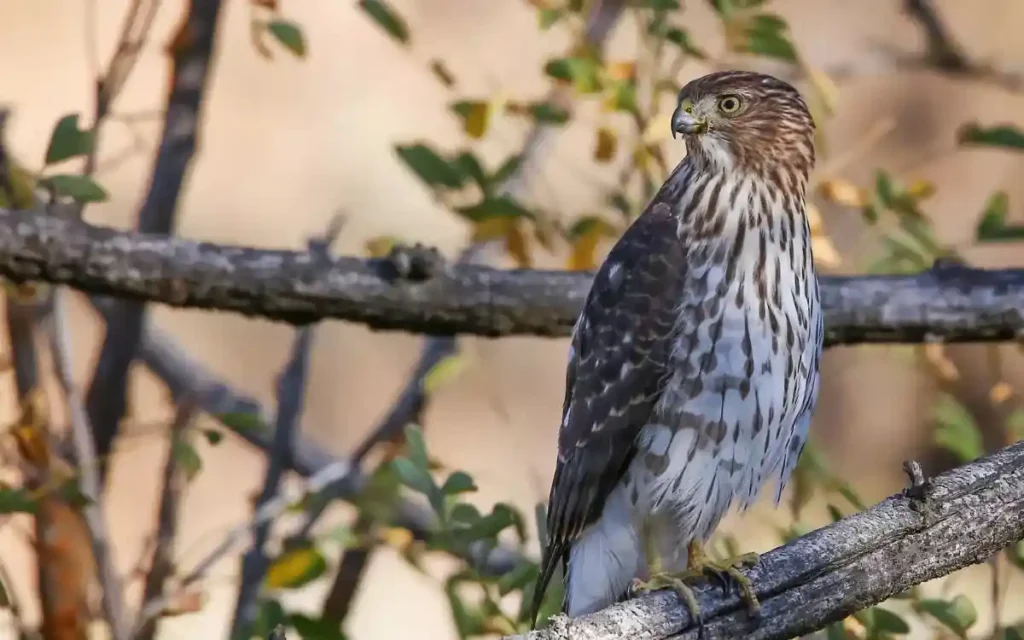
Presence in South Carolina During Winter
As temperatures drop, the Cooper’s Hawk makes its way to South Carolina, where it becomes a familiar sight for bird enthusiasts. Its arrival coincides with the changing landscape and presents an exciting opportunity for observation.
Common Woodland Hawk
Constituting around 3% of checklists, the Cooper’s Hawk is a common woodland hawk. Its adaptability to urban environments contributes to its widespread presence.
Similarity to Sharp-shinned Hawk
The Cooper’s Hawk’s resemblance to the Sharp-shinned Hawk can pose identification challenges. To differentiate between the two, note Cooper’s Hawk’s larger size and square-tipped tail.
Distinct Features and Identification
With a length of male 14.6-15.3 in (37-39 cm) and a weight of approximately 7.8-14.5 oz (220-410 g), the Cooper’s Hawk showcases a distinctive banded tail. Males and females share similar physical characteristics.
Feeding Habits and Nesting Behaviors
Feeding primarily on birds, the Cooper’s Hawk employs stealth and agility to ambush its prey. When it comes to nesting, these hawks choose elevated locations within forests, creating a sturdy nest of twigs and branches.
3. Red-shouldered Hawk:
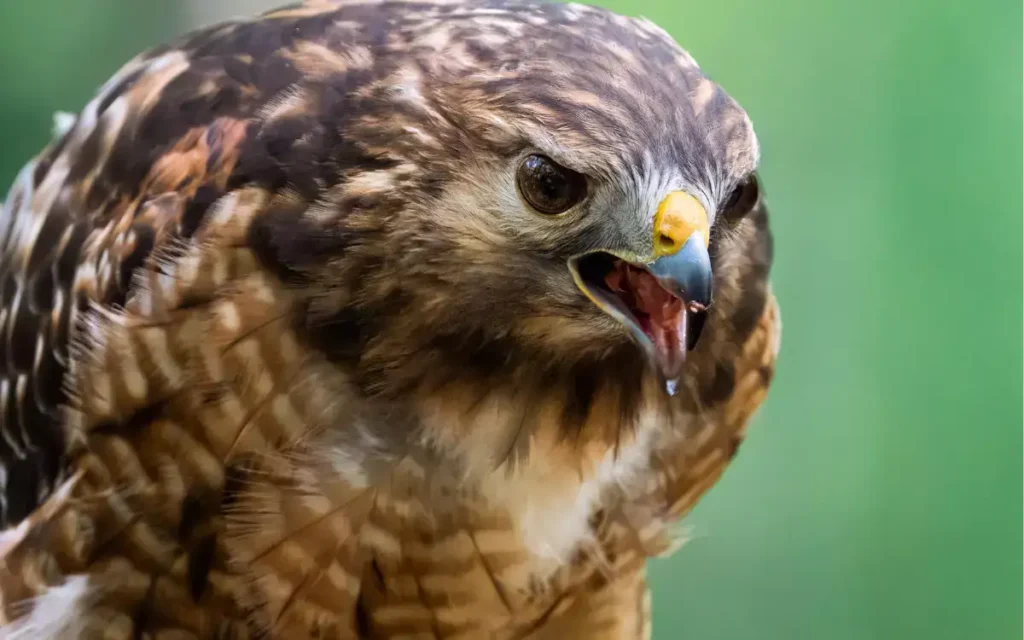
Year-round Presence in South Carolina
The Red-shouldered Hawk is a constant companion in South Carolina’s wet forests. Its presence throughout the year makes it a valuable species to study and appreciate.
Preferred Habitats and Distinct Markings
Thriving in wetlands and forests, the Red-shouldered Hawk boasts striking reddish-brown shoulders that contrast beautifully with its pale underparts. Its vocal calls add to its allure.
Call Description and Prey Preferences
The Red-shouldered Hawk’s distinctive cry echoes through its habitat. It feeds on a diet of small mammals, amphibians, and reptiles, showcasing its role as a top predator.
Nesting Habits and Prey Preferences
Crafting its nest with twigs, leaves, and other materials, this hawk ensures a haven for its young. Eggs hatch after 32-40 days, and the nestlings are cared for by both parents.
Read also:-
4. Broad-winged Hawk:
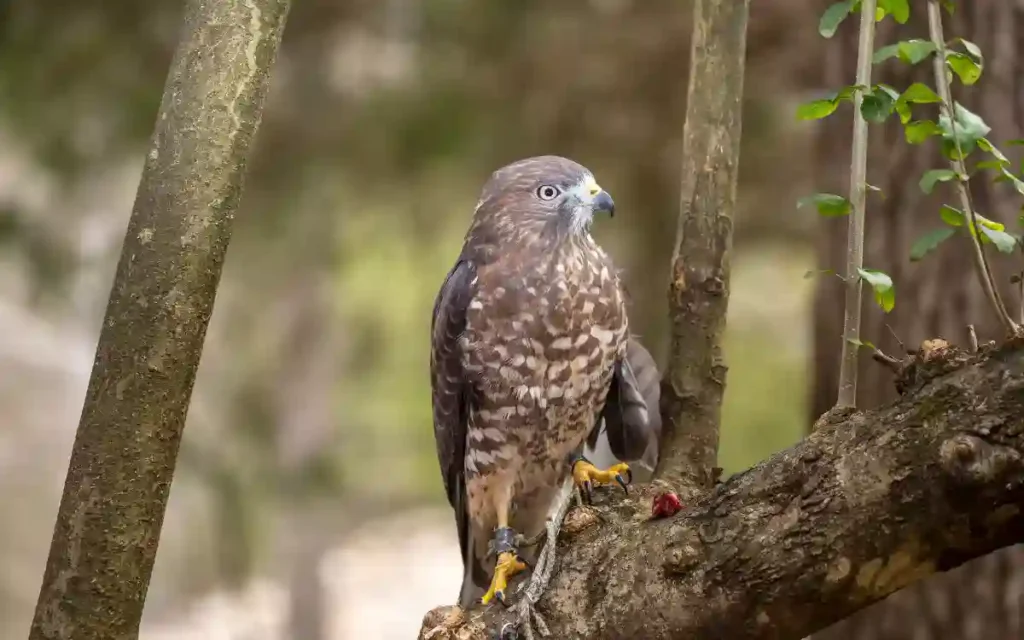
Breeding and Migration Patterns
The Broad-winged Hawk’s breeding and migration patterns make it an intriguing subject for bird enthusiasts. While observed infrequently (less than 1% of checklists), its behaviors are worth exploring.
Physical Characteristics
Characterized by its slender body and an impressive wingspan, the Broad-winged Hawk exhibits a unique appearance. Males and females share similar measurements, with a length of 13.4-17.3 in (34-44 cm) and a weight of 9.3-19.8 oz (265-560 g).
Hunting Behavior and Diet
Employing a keen sense of sight, this hawk hunts small mammals, amphibians, and insects. Its hunting prowess is a testament to its adaptability to various environments.
Nesting Behavior and Habitat
Nesting in dense forests, the Broad-winged Hawk crafts a nest of sticks, leaves, and moss. Its habitat choice reflects its preference for secluded locations.
5. Red-tailed Hawk:
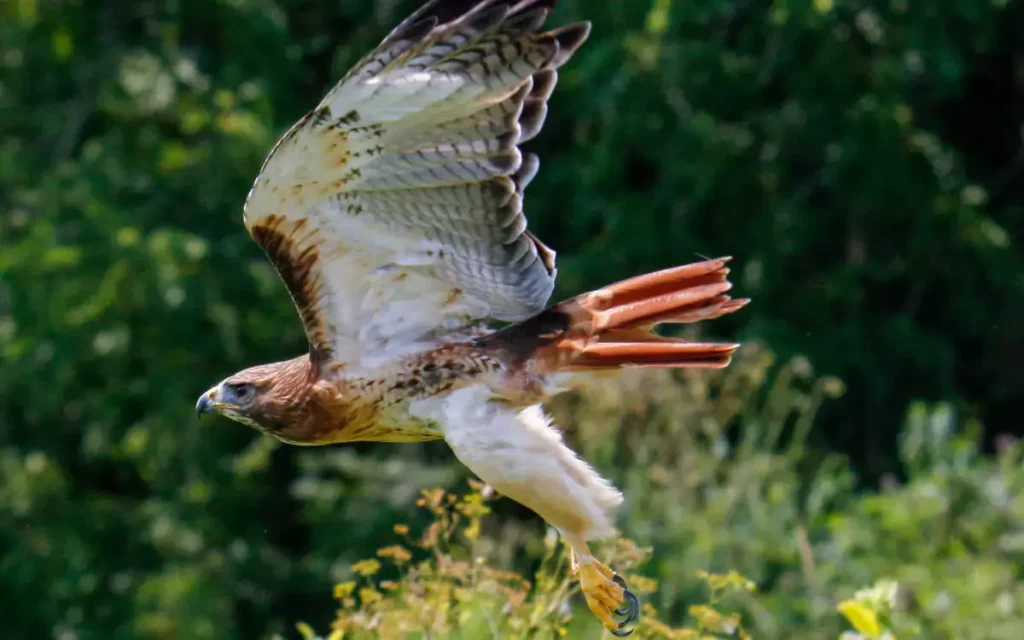
Year-round Presence and Notable Features
The Red-tailed Hawk’s ubiquity in South Carolina, accounting for 10% of sightings, allows ample opportunities for observation. Its most iconic feature, the red tail, is a distinctive identifier.
Easily Recognizable Appearance
With a wingspan of male 44.9-52.4 in (114-133 cm) , the Red-tailed Hawk showcases broad wings, perfect for soaring through open skies. Its plumage varies among subspecies.
Sound Description and Cultural Association
The Red-tailed Hawk’s piercing cry is unmistakable, often heard in movies and documentaries. Its calls resonate with both seasoned bird watchers and casual observers.
Nesting Locations and Eggs
Nesting in various habitats, from forests to open fields, the Red-tailed Hawk’s nests are solidly built structures. Eggs hatch after around __ days, bringing forth a new generation of these magnificent birds.
6. Northern Harrier:
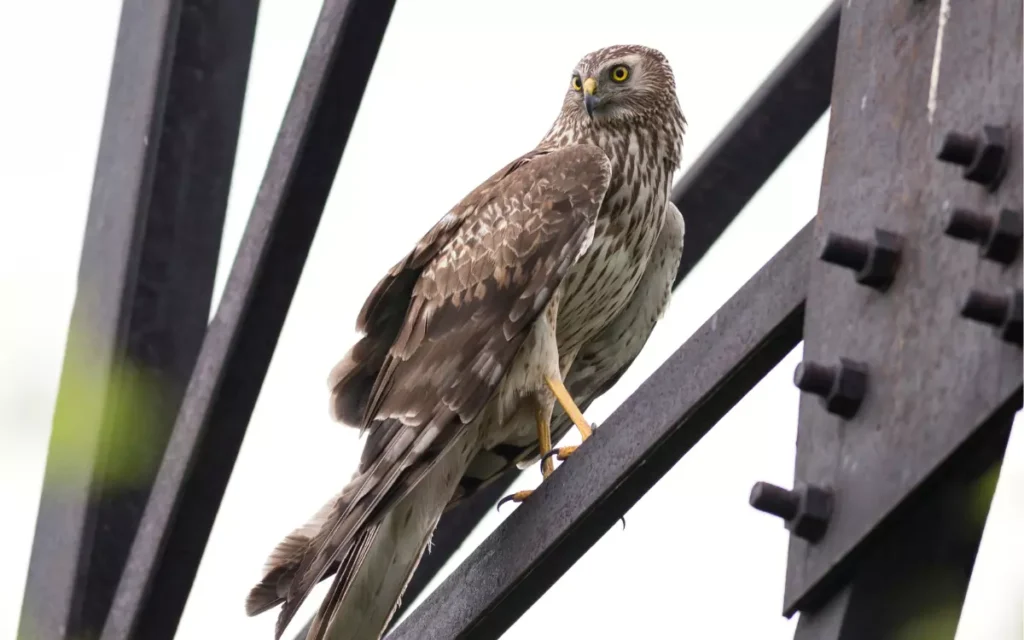
Winter Presence and Unique Behavior
After breeding in northern regions, the Northern Harrier graces South Carolina with its presence during winter. Observing its behavior provides insights into its distinct characteristics.
Physical Appearance and Flight Pattern
With a wingspan of 40.2-46.5 in (102-118 cm), the Northern Harrier exhibits a v-shaped wing posture while flying low over fields and wetlands. Its distinctive white rump is a distinguishing feature.
Nesting Locations and Eggs
This hawk chooses open areas for nesting, constructing its nest on the ground with grass and vegetation. The female lays 4-5 eggs, which are cared for by her during incubation.
Hunting Technique and Food Preference
The Northern Harrier’s unique hunting strategy involves flying low to the ground and listening for the movements of small mammals. Its diet comprises rodents, small birds, and sometimes even insects.
Conclusion:
South Carolina is home to wonderful hawks like the Sharp-shinned and Red-tailed Hawk. Watching these birds helps us learn and protect their homes. Grab binoculars, survey the outdoors, and enjoy finding these marvelous birds.


